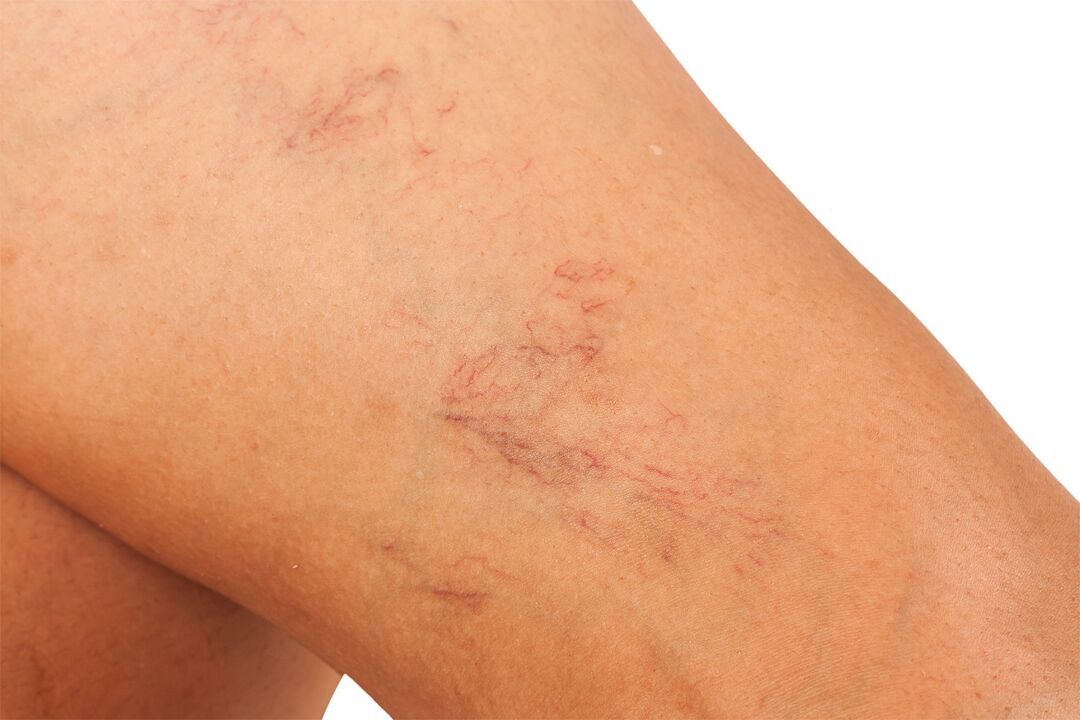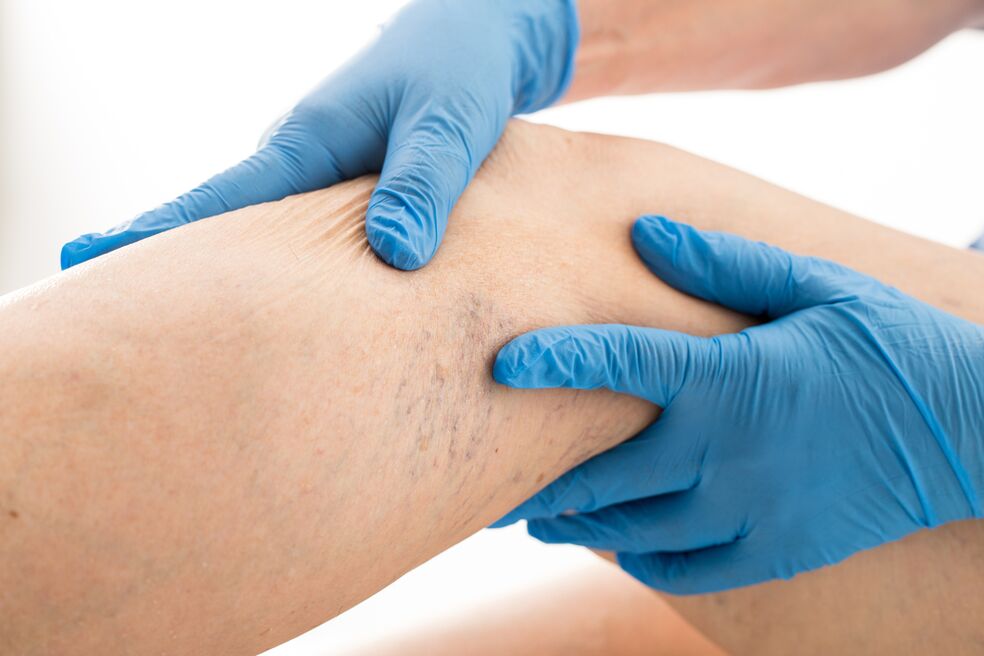Perhaps every third, or even every second person today suffers from the veins of the foot or exposed to it. This has become a real disaster, especially when you consider what our feet are putting in today's civilized world. You need to know about dangerous varicose veins before the appearance of the first signs.
What is the varicose vein

Varicosis in the foot is a chronic disease, in which the veins in the foot develop, creating nodes, resulting in disturbed blood flow, and blood constantly in the vein. In this disease, the vein lumen develops, due to the flow of blood from the veins, the veins in the foot have valves that pass through the blood only, which does not allow blood to stagnation in the feet. If the valve work is interrupted, then the blood begins to move in different directions, each, holding on to the feet.
The cause of varicose veins in the feet in women and men
Among the causes of varicose veins in the foot are called, first of all, the tendency of the hereditary to the disease. If in your family, a person has varicose veins in the feet, then the risk of pain for you is huge, as the disease is caused by the weakness of the vein-one of the most common reasons.
Varicose veins in the feet are female disease mainly, as they wear high shoes -increase their risk. In addition, the hormone shake is inserted into the fire during pregnancy or menopause, which also causes the development of veins in women.
Often, women are sick after forty -five years, but at a younger age they are often found. Often, in adolescents or young people, the disease develops due to open messages of arterial fistulas between veins and arteries.
The development of veins in the feet is found in men, with the nature of the profession, giving a large load. The disease is often sick with people living an inactive lifestyle, spending a lot of time standing, moving a little. Cover uncomfortable shoes, as well as additional pounds, contributing to the formation of stagnation. Liver disease, such as cirrhosis or hepatitis, can cause varicose veins in the feet.
The disease is also quite common among athletes, and this shows that excessive physical activity can also cause it.
Symptoms and signs -to
In the early stages, symptoms of varicose veins in the legs are unclear, the disease can occur. Or the signs of vein development are obvious - large bending veins on the feet begin to stand out under the skin, but one does not suffer from pain. Vienna can be clear, prominent through the skin gradually, and can be clear after hard physical training or hard work. It happened that the veins appeared suddenly after someone spent all day on his feet on the heat.
But if, when checking the lower leg, you realize that the veins under the skin are thick, that there is a site with a fastened connection, and its own veins swell when you stand and fall as you sleep, most likely you will start varicose veins.
Another symptom is swollen feet during the day while sitting, standing, walking, and decreasing swelling in the position.
The bright features of the disease are also pigmentation of the inner surface of the foot - the skin is compacted, becoming less elastic, obtaining a painful shine. In areas with such skin, hair falls.
Varicosis is also characterized by a constant feeling of fatigue in the legs, pain and burning. Someone is tired quickly, sometimes seizures are observed.
Diagnostics and treatment: drugs, operations, people's rehabilitation
Varicosis is diagnosed when examining a specialist by a specialist, as well as based on data from the veins. Phlebography is also performed, that is, different coloring materials are introduced into the blood, and after which veins are learned.
Treatment depends on the level of the disease, and whether the disease is accompanied by complications. Treatment can be based on conservative and surgical methods. Conservatives are meant to wear socks or tight, internal and external use drugs. Conservative treatment methods also include sclerotherapy and laser irradiation. In very complex cases, the veins are removed by surgery.

A person suffering from foot varicose veins should know that in the case of a sudden increase in the feet, fever and skin compaction, it is necessary to immediately call a doctor. Such attacks can be accompanied by shortness of breath, feelings of lack of air, weakness, and bleeding.
Expert opinion: How is this related to varicose veins? Expanded vein thrombling occurs, thrombus inflammation is thrombophlebitis. The disease can occur at high body temperature. Some of the thrombus can escape and enter the pulmonary artery, which will cause shortness of breath and further development of life -threatening symptoms.
Not in such cases with home treatment - contact your doctor.
The most effective and radical method for treating varicose veins is, of course, surgery. Operations use if conservative treatment methods are ineffective. The essence of the operation turns to the fact that through small incisions on the skin, the surgeon removes the expanded veins. Then the feet are carefully tied, and after a few hours the patient can stand and even walk. This may be the only way guaranteed to eliminate the serious consequences of the disease.
Folk medicine can help in the treatment of traditional methods or reduce the condition of the patient. Therefore, the main components of medical ointment are:
- Horse chestnut;
- Kalanchoe;
- Sagebrush;
- white willow skin;
- Mokrin;
- Celandine;
- Cabbage.
Popular products based on animal fat, apple cider vinegar, bee products (honey, propolis), body, clay and other components will also help cure the disease.
As a result of varicose veins
The foot vein should not be left behind, it must be treated, because, advanced, the disease can lead to many unpleasant and sad consequences. Therefore, varicose veins can be complicated by eczema and dermatitis - inflammation of the foot inflammation, the right cause is venous blood. Eczema is characterized by the appearance of redness on the skin, and the red edge is uneven, the skin in these places itching and cracks or bubbles appear.
Varicose eczema, in turn, can develop into tropical ulcers. Trophic ulcer is also a complication of varicose veins - it is a long -term ulcer on the skin in the lower leg. Trophic ulcer begins with a shallow ulcer characterized by bleeding or transparent fluid at the bottom. These are a very painful wound that can damage one's life - leading to a violation of life, sleeping.
One of the most common complications of varicose veins in the feet is thrombophlebitis, which is inflammation of the veins, accompanied by the formation of blood clots or blood clots. Thrombophlebitis is usually accompanied by severe pain during walking, fever, skin redness and sealing. With thrombophlebitis, the rupture of the veins in the expansion is possible, as a result of bleeding. In this case, you should contact your doctor immediately.























